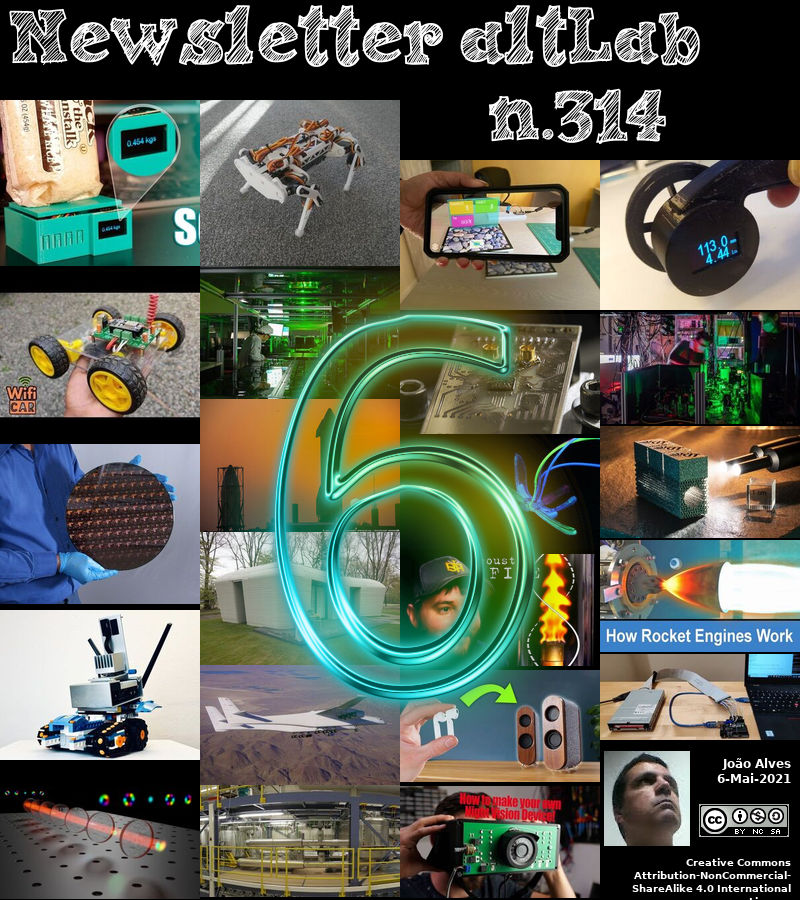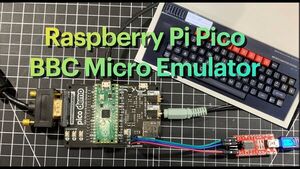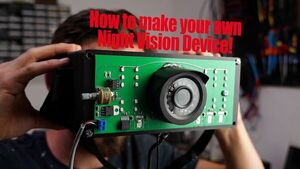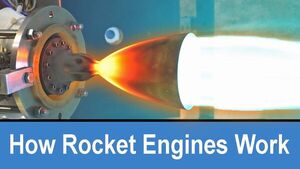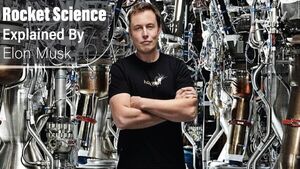2021-05-06 - Nº 314
Editorial
Esta é a Newsletter Nº 314 que se apresenta com o mesmo formato que as anteriores. Se gostar da Newsletter partilhe-a!
Todas as Newsletters encontram-se indexadas no link.
Esta Newsletter tem os seguintes tópicos:
Faz hoje anos que nascia, em 1871, o químico francês Victor Grignard. Ele recebeu o Prémio Nobel de Química em 1912, pelo seu desenvolvimento da reacção de Grignard. Ele descobriu os halogenetos de alquilmagnésio (1901), que são preparados pela reacção de magnésio com um halogeneto orgânico em éter seco, produzindo compostos do tipo RMgX, onde X é um halogéneo (Cl, Br, I) e R um grupo orgânico. Esses reagentes de Grignard são extremamente importantes em sínteses orgânicas. Eles são muito versáteis e permitem a síntese de um grande número de diferentes classes de compostos, particularmente álcoois secundários e terciários, hidrocarbonetos e ácidos carboxílicos facilitam uma série de reacções químicas e Grignard passou grande parte de sua vida a trabalhar neles.
Faz igualmente hoje anos que nascia, em 1872, o Matemático, astrónomo e cosmólogo holandês Willem de Sitter. Ele desenvolveu modelos teóricos do universo com base na teoria geral da relatividade de Albert Einstein. Ele trabalhou extensivamente nos movimentos dos satélites de Júpiter, determinando as suas massas e órbitas a partir de décadas de observações. Ele determinou as constantes fundamentais da astronomia e determinou a variação da rotação da Terra. Ele também realizou estudos estatísticos da distribuição e do movimento das estrelas, mas hoje é mais conhecido pelas suas contribuições à cosmologia. A sua solução de 1917 para as equações de campo de Albert Einstein mostrou que um universo quase vazio se expandiria. Mais tarde, ele e Einstein encontraram uma solução para o universo em expansão sem curvatura espacial.
Faz também hoje anos que nascia, em 1908, o físico canadiano John F. Allen. Ele co-descobriu a super-fluidez do hélio líquido perto da temperatura de zero absoluto. Trabalhando no Royal Society Mond Laboratory em Cambridge, com Don Misener, ele descobriu (1930) que abaixo da temperatura de 2,17 kelvin, o hélio líquido poderia fluir através de capilares muito pequenos com viscosidade praticamente zero. Independentemente, P. L. Kapitza em Moscovo produziu resultados semelhantes quase ao mesmo tempo. OS seus dois artigos foram publicados juntos na edição de 8 de Janeiro de 1938 da revista Nature. A super-fluidez é uma manifestação visível resultante da mecânica quântica da condensação de Bose-Einstein. Em 1945, a pesquisa em Moscovo mergulhou no aspecto microscópico, que Allen não investigou.
Faz igualmente hoje anos que nascia, em 1916, o Físico norte-americano Robert H. Dicke. Ele trabalhou em campos tão amplos como física de micro-ondas, cosmologia e relatividade. Como teórico inspirado e experimentalista de sucesso, o seu tema unificador foi a aplicação de métodos experimentais poderosos e escrupulosamente controlados a questões que realmente importam. Ele também fez uma série de contribuições significativas para a tecnologia de radar e para o campo da física atómica. A sua visualização de um universo oscilante estimulou a descoberta da radiação cósmica de fundo em micro-ondas, a evidência mais directa de que nosso universo realmente se expandiu de um estado denso. Um instrumento-chave nas medições deste fóssil do Big Bang é o radiómetro de micro-ondas que ele inventou. As suas patentes variavam de secadores de roupas a laseres.
Por fim, faz hoje anos que nascia, em 1929, o químico norte-americano Paul Lauterbur. Ele partilhou (com Sir Peter Mansfield) o Prémio Nobel de Fisiologia ou Medicina de 2003 "pelas suas descobertas sobre imagens de ressonância magnética".
Nesta semana que passou a SpaceX lançou o foguetão Starship SN15, o quinto da sua família, num voo de teste que o elevou a uma altitude de 10 Km e que permitiu, desta vez com sucesso, aterrar o mesmo. O lançamento ocorreu no 60º aniversário do primeiro voo sub-orbital norte-americano tripulado. O SN15 de aço inoxidável ("Serial No. 15") descolou do local de teste Starbase da SpaceX, perto da vila de Boca Chica no sul do Texas, às 18h24. EST (22:24 GMT) da passada quarta-feira. O veículo subiu cerca de 10 quilómetros no céu, realizou uma série de manobras e desceu para um toque seguro na sua área de pouso de betão designada, seis minutos após a descolagem. A SpaceX está a desenvolver a Starship para levar pessoas e cargas à Lua, Marte e outros destinos distantes. O sistema consiste em dois elementos, ambos projectados para serem total e rapidamente reutilizáveis: uma nave espacial chamada Starship e um impulsionador gigante de primeiro estágio chamado Super Heavy.
Também nesta semana que passou a IBM anunciou o desenvolvimento do primeiro chip do mundo com tecnologia de 2 nm. A exigência por maior desempenho e eficiência energética dos chips continua a crescer, especialmente na era da "cloud" híbrida, IA e IoT. A nova tecnologia de chip de 2 nm da IBM ajuda a avançar o estado da arte na indústria de semicondutores, atendendo a essa necessidade crescente. O Chip foi projectado para atingir um desempenho 45% maior e um consumo de energia 75% menor do que os chips de 7 nm mais avançados de hoje.
Hoje a Newsletter faz seis anos! Sempre, de forma, ininterrupta tenho trazido aqui a esta audiência noticias e projectos do que acontece em todo o mundo. Ao longo destes 6 anos já foram publicados mais de dez mil projectos, quase oito mil noticias e perto de setecentos EBooks e Revistas.
Nesta 314º Newsletter faço uma reflexão sobre o ultimo ano que foi bastante animado em termos do mundo voltar a olhar para a exploração espacial como forma de expandir-mos o conhecimento do mundo que nos rodeia e de podermos concretizar desafios ainda maiores que os que nos levaram na 1ª corrida ao espaço. A chegada de inúmeros veículos de exploração espacial a Marte é disso um reflexo. Também a intenção, em alguns casos já concretizada, de voltar à Lua é disso uma realidade. Também neste ultimo ano e meio vivemos envoltos numa pandemia que nos fez pensar e quebrar certos dogmas e dados adquiridos que tínhamos, como a liberdade (que por diversas alturas nos foi condicionada), a disponibilidade de bens essenciais (com a existência de quotas para se entrar em lojas e supermercados), o trabalho que desapareceu e que afectou uma parte significativa da nossa sociedade.
Sinto no entanto que vivemos tempos de alguma esperança, esperança de que as coisas melhorem, seja por ultrapassarmos esta situação pandémica, seja por estarmos mais conscientes de que os recursos do planeta não são ilimitados e que cabe a todos termos um papel activo na defesa e preservação do mesmo. A utilização de energias renováveis e o cada vez menor recurso a combustíveis fosseis nas nossas deslocações (seja por uso de veículos eléctricos ou de veículos sem motor) é outra das evoluções que se tem observado.
Haja esperança!
Na Newsletter desta semana apresentamos diversas noticias, artigos científicos, projetos de maker assim como alguns videos interessantes. É apresentado o livro "Computer Science from the Bottom Up".
 João Alves ([email protected])
João Alves ([email protected])
O conteúdo da Newsletter encontra-se sob a licença  Creative Commons Attribution-NonCommercial-ShareAlike 4.0 International License.
Creative Commons Attribution-NonCommercial-ShareAlike 4.0 International License.
Novidades da Semana
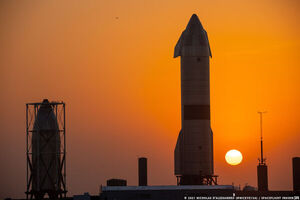
SpaceX launches Starship SN15 rocket and sticks the landing in high-altitude test flight
""Landing nominal," Elon Musk says. The private spaceflight company's latest Starship prototype aced a high-altitude test flight today (May 5), checking every box from takeoff to touchdown for the first time. "We are down! The Starship has landed," John Insprucker, SpaceX's principal integration engineer, said during live commentary. Today's uncrewed test came on the 60th anniversary of the United States' first-ever crewed spaceflight, the suborbital jaunt of NASA astronaut Alan Shepard. The historical parallel is coincidental but appropriate, for SN15's success marks a big step forward in SpaceX's plans to help extend humanity's footprint out into the final frontier." [...]

IBM Unveils World's First 2 Nanometer Chip Technology, Opening a New Frontier for Semiconductors
"New chip milestone to propel major leaps forward in performance and energy efficiency IBM today unveiled a breakthrough in semiconductor design and process with the development of the world's first chip announced with 2 nanometer (nm) nanosheet technology. Semiconductors play critical roles in everything from computing, to appliances, to communication devices, transportation systems, and critical infrastructure. Demand for increased chip performance and energy efficiency continues to rise, especially in the era of hybrid cloud, AI, and the Internet of Things. IBM's new 2 nm chip technology helps advance the state-of-the-art in the semiconductor industry, addressing this growing demand. It is projected to achieve 45 percent higher performance, or 75 percent lower energy use, than today's most advanced 7 nm node chips. The potential benefits of these advanced 2 nm chips could include: Quadrupling cell phone battery life, only requiring users to charge their devices every four daysii." [...]
Outras Notícias
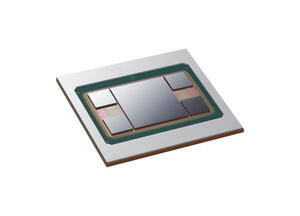
Samsung Electronics Announces Availability of Its Next Generation 2.5D Integration Solution ‘I-Cube4’ for High-Performance Applications
"I-Cube4' incorporates four HBMs and one logic die on a paper-thin silicon interposer, supporting enhanced thermal management as well as stable power supply Samsung Electronics, a world leader in advanced semiconductor technology, today announced the immediate availability of its next-generation 2.5D packaging technology Interposer-Cube4 (I-Cube4), leading the evolution of chip packaging technology once again. Samsung’s I-CubeTM is a heterogeneous integration technology that horizontally places one or more logic dies (CPU, GPU, etc.) and several High Bandwidth Memory (HBM) dies on top of a silicon interposer, making multiple dies operate as a single chip in one package. Samsung’s new I-Cube4, which incorporates four HBMs and one logic die, was developed in March as the successor of I-Cube2. From high-performance computing (HPC) to AI, 5G, cloud and large data center applications, I-Cube4 is expected to bring another level of fast communication and power efficiency between logic and memory through heterogeneous integration. “With the explosion of high-performance applications, it is essential to provide a total foundry solution with heterogeneous integration technology to improve the overall performance and power efficiency of chips,” said Moonsoo Kang, senior vice president of Foundry Market Strategy at Samsung Electronics." [...]
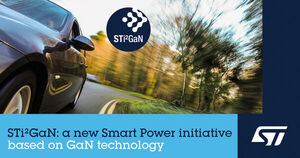
STMicroelectronics Introduces High-Performance GaN Family for Automotive Applications
"STMicroelectronics (NYSE: STM), a global semiconductor leader serving customers across the spectrum of electronics applications, has announced a new family of ST Intelligent and Integrated Gallium Nitride (GaN) solutions, STi2GaN. STi2GaN is an innovative and unique offering combining power and intelligence in compact, high-performance solutions required by the automotive industry as it shifts to electrified platforms. Building on ST’s leadership and strong automotive experience, innovations in Smart Power technology, wide bandgap semiconductor materials and packaging expertise, the STi2GaN family combines a monolithic power stage along with drivers and protections in GaN technology as well as System-in-Package (SiP) solutions for application-specific ICs with additional processing and control circuitry. The STi2GaN solutions use ST’s novel bond-wire-free packaging technology to provide high robustness, reliability, and performance. “STi2GaN continues ST’s long success story in compound materials and Smart Power product innovation, targeting mainly automotive applications and the needs of high-density, high-reliability and high-power. Initial offering of STi2GaN solutions suit On-Board Chargers, LiDAR for autonomous driving, bidirectional DC-DC converters, Class-D amplifiers and power conversion systems,” said Alfio Russo, Group VP and GM Low Voltage and STi2GaN Solutions Macro Division, STMicroelectronics." [...]

Stratolaunch flies world's largest airplane on 2nd test flight
"The Roc stayed aloft for 3 hours and 14 minutes today (April 29). The biggest airplane ever built now has two flights under its belt. Stratolaunch's Roc carrier plane, which is being groomed to haul hypersonic vehicles aloft, conducted its second-ever test flight Thursday morning (April 29). The giant aircraft, which features a wingspan of 385 feet (117 meters), took off from Mojave Air and Space Port in southeastern California at 10:28 a.m. EDT (1428 GMT; 7:28 local California time) on a data-gathering shakeout cruise that lasted three hours and 14 minutes. Roc reached a maximum altitude of 14,000 feet (4,267 m) and a top speed of 199 mph (320 kph) during Thursday's test flight, which Stratolaunch deemed a success. "We're very pleased with how the Stratolaunch aircraft performed today, and we are equally excited about how much closer the aircraft is to launching its first hypersonic vehicle," Stratolaunch chief operating officer Zachary Krevor said during a postflight news conference today." [...]

3D-printed home in Dutch city expands housing options
"Elize Lutz and Harrie Dekkers’ new home is a 94-square meter (1,011-square foot) two-bedroom bungalow that resembles a boulder with windows. The curving lines of its gray concrete walls look and feel natural. But they are actually at the cutting edge of housing construction technology in the Netherlands and around the world: They were 3D printed at a nearby factory. “It’s special. It’s a form that’s unusual, and when I saw it for the first time, it reminds me of something you knew when you were young,” Lutz said Friday. She will rent the house with Dekkers for six months for 800 euros ($970) per month." [...]
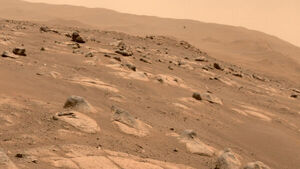
Ingenuity Completes Its Fourth Flight
"Ingenuity successfully completed its fourth flight today, and we couldn’t be happier. The helicopter took off at 10:49 a.m. EDT (7:49 a.m. PDT, or 12:33 local Mars time), climbing to an altitude of 16 feet (5 meters) before flying south approximately 436 feet (133 meters) and then back, for an 872-foot (266-meter) round trip. In total, we were in the air for 117 seconds. That’s another set of records for the helicopter, even compared to the spectacular third flight. We also managed to capture lots of images during the flight with the color camera and with Ingenuity’s black-and-white navigation camera, which tracks surface features as it flies. Images from that navigation camera are typically used by Ingenuity’s flight controller and then thrown away unless we specifically tell the helicopter to store them for later use." [...]
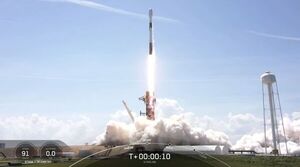
SpaceX's Star Wars Day launch puts 60 Starlink satellites in orbit, lands rocket
"A SpaceX Falcon 9 rocket launched a full stack of 60 Starlink internet satellites into orbit on Tuesday afternoon (May 4) and then stuck its landing at sea to top off a successful mission. The veteran Falcon 9 rocket blasted off from Pad 39A here at NASA's Kennedy Space Center in Florida at 3:01 p.m. EDT (1901 GMT), marking the company's 13th launch of the year. SpaceX launched its own version of the "fastest hunk of junk in the galaxy," the Falcon 9, on Star Wars Day (aka "May the Fourth"), a global celebration of all things "Star Wars." The 229-foot-tall (70 meters) rocket is named after the Millennium Falcon — the iconic ship in the "Star Wars" franchise piloted by Han Solo. It's payload? A full stack of 60 flat-paneled broadband satellites called Starlink." [...]
Ciência e Tecnologia

Physicists find a novel way to switch antiferromagnetism on and off
"The findings could lead to faster, more secure memory storage, in the form of antiferromagnetic bits. When you save an image to your smartphone, those data are written onto tiny transistors that are electrically switched on or off in a pattern of “bits” to represent and encode that image. Most transistors today are made from silicon, an element that scientists have managed to switch at ever-smaller scales, enabling billions of bits, and therefore large libraries of images and other files, to be packed onto a single memory chip. But growing demand for data, and the means to store them, is driving scientists to search beyond silicon for materials that can push memory devices to higher densities, speeds, and security. Now MIT physicists have shown preliminary evidence that data might be stored as faster, denser, and more secure bits made from antiferromagnets. Antiferromagnetic, or AFM materials are the lesser-known cousins to ferromagnets, or conventional magnetic materials." [...]

With a zap of light, system switches objects’ colors and patterns
"“Programmable matter” technique could enable product designers to churn out prototypes with ease. When was the last time you repainted your car? Redesigned your coffee mug collection? Gave your shoes a colorful facelift? You likely answered: never, never, and never. You might consider these arduous tasks not worth the effort." [...]
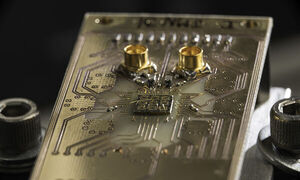
Researchers confront major hurdle in quantum computing
"In a series of papers, Rochester researchers report major strides in improving the transfer of information in quantum systems. Quantum science has the potential to revolutionize modern technology with more efficient computers, communication, and sensing devices. But challenges remain in achieving these technological goals, especially when it comes to effectively transferring information in quantum systems. A regular computer consists of billions of transistors, called bits. Quantum computers, on the other hand, are based on quantum bits, also known as qubits, which can be made from a single electron. Unlike ordinary transistors, which can be either “0” (off) or “1” (on), qubits can be both “0” and “1” at the same time." [...]
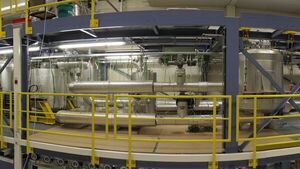
Renewable Energy Sources: On the Way towards Large-scale Thermal Storage Systems
"High-temperature technologies enable electrothermal storage systems for large amounts of energy from renewable sources. Karlsruhe Institute of Technology (KIT), the German Aerospace Center (DLR), and the industry partner KSB have now launched the LIMELISA project to develop the necessary basis. Research is funded with EUR 3.8 million by the Federal Ministry for Economic Affairs and Energy. Every year, wind parks and solar facilities in Germany produce thousands of gigawatt hours of power that cannot be used directly and therefore remain unused. At other times, lacking capacities are compensated by energy from fossil sources. Large-scale electrothermal storage systems may solve this problem and additionally enhance grid stability." [...]
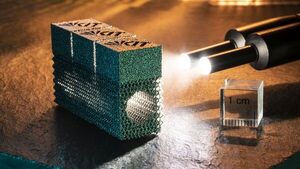
Electron Beam Melting Gets Brittle Metal into Shape
"KIT Researchers Are the First to Print Tungsten Components for Use at High Temperatures by Electron Beam Melting. Tungsten has the highest melting point of all metals, 3,422 degrees Celsius. This makes the material ideal for use at high temperatures in e.g. space rocket nozzles, heating elements of high-temperature furnaces, or the fusion reactor. However, the metal is highly brittle and, hence, difficult to process. Researchers of Karlsruhe Institute of Technology (KIT) have developed an innovative approach to making this brittle material soft." [...]
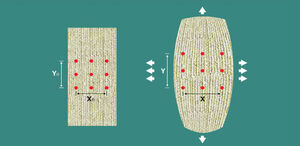
2D materials offer unique stretching properties
"Calculations predict that atom-thin sheets of carbon chalcogenides will grow wider when stretched in any direction. Like most materials, an elastic band gets thinner when it is stretched. But some materials behave in the opposite way — they grow thicker when stretched and thinner when compressed. These counterintuitive substances, known as auxetic materials, tend to have a high resistance to shear or fracture and are used in applications such as medical implants and sensors. But typically, this auxetic effect is only seen when the material is distorted in one particular direction. Now, Minglei Sun and Udo Schwingenschlögl have predicted that a group of carbon-based materials, formed into atom-thin sheets, should show this auxetic effect in every direction." [...]

Closing in on state-of-the-art semiconductor solar cells
"Mixed-cation single crystals narrow the gap between perovskite and top-performing semiconductor solar cells. A synthetic approach that improves absorber layers in perovskite solar cells could help them achieve their full potential and draw closer to the performance of leading gallium arsenide devices. Solar cells that rely on perovskite thin films to capture sunlight are the fastest growing photovoltaic technology. Cheaper and easier to manufacture and incorporate into devices than conventional semiconductors, lead halide perovskites also effectively absorb visible light and display long charge carrier diffusion lengths — an indicator of their ability to maintain light-induced electrons and holes separation and facilitate charge transport. Performance of solar cells hinges on absorber materials with a high-quality crystal structure and a narrow bandgap to maximize sunlight harvesting. This optimal bandgap range spans energies of 1.1 to 1.4 eV, which corresponds to near-infrared wavelengths." [...]
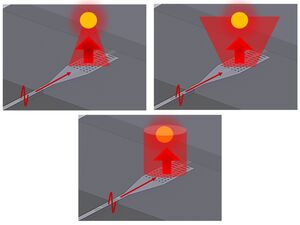
Nano flashlight enables new applications of light
"Design of miniature optical systems could lead to future cell phones that can detect viruses and more. In work that could someday turn cell phones into sensors capable of detecting viruses and other minuscule objects, MIT researchers have built a powerful nanoscale flashlight on a chip. Their approach to designing the tiny light beam on a chip could also be used to create a variety of other nano flashlights with different beam characteristics for different applications. Think of a wide spotlight versus a beam of light focused on a single point. For many decades, scientists have used light to identify a material by observing how that light interacts with the material. They do so by essentially shining a beam of light on the material, then analyzing that light after it passes through the material." [...]
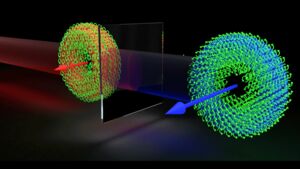
Somersaulting Photons
"Spinning or rotating objects are commonplace, from toy tops and fidget spinners to spinning figure skaters. And from water circling a drain to far less welcome tornadoes and hurricanes. In physics, there are two kinds of rotational motion, spin rotation or orbital rotation. Earth’s motion in our solar system nicely illustrates these: The daily 360 degree rotation of earth around its own axis is ‘spin’ rotation, while earth’s yearly trip around the sun is ‘orbital’ rotation. The quantity in physics defined to describe such rotational motion is “angular momentum” (AM). The important thing about AM is that it is a conserved quantity." [...]

A material-keyboard made of graphene
"Researchers at ETH Zurich have succeeded in turning specially prepared graphene flakes either into insulators or into superconductors by applying an electric voltage. This technique even works locally, meaning that in the same graphene flake regions with completely different physical properties can be realized side by side. The production of modern electronic components requires materials with very diverse properties. There are isolators, for instance, which do not conduct electric current, and superconductors which transport it without any losses. To obtain a particular functionality of a component one usually has to join several such materials together. Often that is not easy, in particular when dealing with nanostructures that are in widespread use today." [...]

BYU hologram experts can now create real-life images that move in the air
"They may be tiny weapons, but BYU’s holography research group has figured out how to create lightsabers — green for Yoda and red for Darth Vader, naturally — with actual luminous beams rising from them. Inspired by the displays of science fiction, the researchers have also engineered battles between equally small versions of the Starship Enterprise and a Klingon Battle Cruiser that incorporate photon torpedoes launching and striking the enemy vessel that you can see with the naked eye. “What you’re seeing in the scenes we create is real; there is nothing computer generated about them,” said lead researcher Dan Smalley, a professor of electrical engineering at BYU. “This is not like the movies, where the lightsabers or the photon torpedoes never really existed in physical space. These are real, and if you look at them from any angle, you will see them existing in that space.” It’s the latest work from Smalley and his team of researchers who garnered national and international attention three years ago when they figured out how to draw screenless, free-floating objects in space. Called optical trap displays, they’re created by trapping a single particle in the air with a laser beam and then moving that particle around, leaving behind a laser-illuminated path that floats in midair; like a “a 3D printer for light.” The research group’s new project, funded by a National Science Foundation CAREER grant, goes to the next level and produces simple animations in thin air." [...]
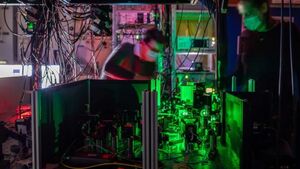
World's 1st multinode quantum network is a breakthrough for the quantum internet
"The move to a three-node system is a quantum leap in network design. Scientists have gotten one step closer to a quantum internet by creating the world's first multinode quantum network. Researchers at the QuTech research center in the Netherlands created the system, which is made up of three quantum nodes entangled by the spooky laws of quantum mechanics that govern subatomic particles. It is the first time that more than two quantum bits, or "qubits," that do the calculations in quantum computing have been linked together as "nodes," or network endpoints. Researchers expect the first quantum networks to unlock a wealth of computing applications that can't be performed by existing classical devices — such as faster computation and improved cryptography. "It will allow us to connect quantum computers for more computing power, create unhackable networks and connect atomic clocks and telescopes together with unprecedented levels of coordination," Matteo Pompili, a member of the QuTech research team that created the network at Delft University of Technology in the Netherlands, told Live Science." [...]
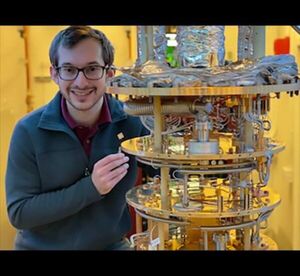
MIT turns “magic” material into versatile electronic devices
"Work also promises new insights into superconductivity In a feat worthy of a laboratory conceived by J.K. Rowling, MIT researchers and colleagues have turned a “magic” material composed of atomically thin layers of carbon into three useful electronic devices. Normally, such devices, all key to the quantum electronics industry, are created using a variety of materials that require multiple fabrication steps. The MIT approach automatically solves a variety of problems associated with those more complicated processes. As a result, the work could usher in a new generation of quantum electronic devices for applications including quantum computing. Further, the devices can be superconducting, or conduct electricity without resistance. They do so, however, through an unconventional mechanism that, with further study, could give new insights into the physics of superconductivity." [...]
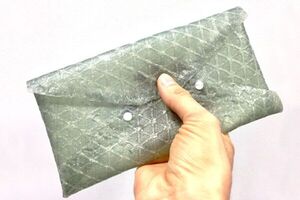
Tufts SilkLab Creates Leather-like Material from Silk Proteins
"Alternative leather manufacturing moves towards sustainable sources and environmentally friendly chemical processes Leather is an ever growing multi-billion dollar industry requiring more than 3.8 billion bovine animals – equal to one for every two people on earth – to sustain production each year. And while the products – clothing, shoes, furniture and more – can be quite elegant and durable, the environmental impact of leather production has been severe, leading to deforestation, water and land overuse, environmental pollution, and greenhouse gas emissions. Researchers at Tufts University School of Engineering set out to find an alternative to leather, with similar texture, flexibility and stiffness, yet focused on materials that are sustainable, non-toxic, and friendly to the environment. It turns out, we have been wearing that material all along – it’s silk, but instead of weaving the silk into fabric, the Tufts engineers were able to break down the fibers from silkworm cocoons into their protein components, and re-purpose the proteins to form the leather-like material. The process for making silk-based leather is described in a study published in the journal Materials & Design. The silk-based leather can be printed into different patterns and textures, has similar physical properties to real leather, and can withstand the folding, piercing, and stretching typically used to create leather goods, including the ability to stitch together pieces of material and attach hardware such as rivets, grommets, handles and clasps." [...]
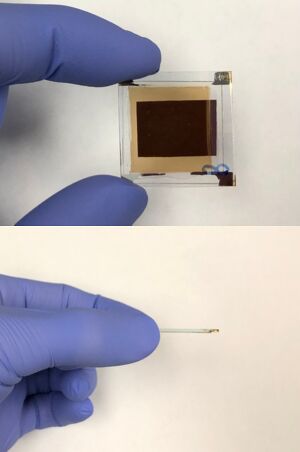
Thin, Large-Area Device Converts Infrared Light into Images
"Seeing through smog and fog. Mapping out a person’s blood vessels while monitoring heart rate at the same time—without touching the person’s skin. Seeing through silicon wafers to inspect the quality and composition of electronic boards. These are just some of the capabilities of a new infrared imager developed by a team of researchers led by electrical engineers at the University of California San Diego. The imager detects a part of the infrared spectrum called shortwave infrared light (wavelengths from 1000 to 1400 nanometers), which is right outside of the visible spectrum (400 to 700 nanometers). Shortwave infrared imaging is not to be confused with thermal imaging, which detects much longer infrared wavelengths given off by the body." [...]

CMU Lab Leads Development of Pasta That Morphs Into Shape When Cooked
"Flat-Packed Noodles Create More Sustainable Packaging, Transportation and Storage People love pasta for its shapes — from tubes of penne and rigatoni to spirals of fusilli and rotini. But what makes farfalle different from conchiglie also makes the staple a bear to package, requiring large bags and boxes to accommodate the iconic shapes of pastas around the world. A research team led by the Morphing Matter Lab at Carnegie Mellon University is developing flat pasta that forms into familiar shapes when cooked. The team impresses tiny grooves into flat pasta dough — made of only semolina flour and water — in patterns that cause it to morph into tubes, spirals, twists and waves when cooked. The morphed pasta looks, feels and, most importantly, tastes like traditional pasta, while opening new possibilities for food design and allowing for flat-packed pasta that would cut back on packaging, save space in storage and transportation, and possibly reduce the time and energy needed for cooking. "We were inspired by flat-packed furniture and how it saved space, made storage easier and reduced the carbon footprint associated with transportation," said Lining Yao, director of the Morphing Matter Lab in the Human-Computer Interaction Institute at CMU's School of Computer Science." [...]
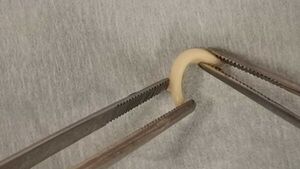
U of A researchers successfully use 3-D ‘bioprinting’ to create nose cartilage
"Technological leap offers a simpler, safer way to provide cartilage for surgeries. A team of University of Alberta researchers has discovered a way to use 3-D bioprinting technology to create custom-shaped cartilage for use in surgical procedures. The work aims to make it easier for surgeons to safely restore the features of skin cancer patients living with nasal cartilage defects after surgery. The researchers used a specially designed hydrogel—a material similar to Jell-O—that could be mixed with cells harvested from a patient and then printed in a specific shape captured through 3-D imaging. Over a matter of weeks, the material is cultured in a lab to become functional cartilage. “It takes a lifetime to make cartilage in an individual, while this method takes about four weeks." [...]
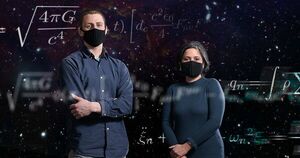
Dark Matter Detection
"UD’s Singh and collaborators propose repurposing tabletop sensors to search for dark matter Scientists are certain that dark matter exists. Yet, after more than 50 years of searching, they still have no direct evidence for the mysterious substance. University of Delaware’s Swati Singh is among a small group of researchers across the dark matter community that have begun to wonder if they are looking for the right type of dark matter. “What if dark matter is much lighter than what traditional particle physics experiments are looking for?” said Singh, an assistant professor of electrical and computer engineering at UD. Now, Singh, Jack Manley, a UD doctoral student, and collaborators at the University of Arizona and Haverford College, have proposed a new way to look for the particles that might make up dark matter by repurposing existing tabletop sensor technology. The team recently reported their approach in a paper published in Physical Review Letters." [...]
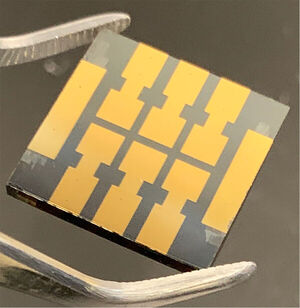
'Molecular glue' makes perovskite solar cells dramatically more reliable over time
"In a study that could help to bring inexpensive, efficient perovskite solar cells one step closer to commercial use, researchers found a way to strengthen a key weak point in the cells, dramatically increasing their functional life. A research team from Brown University has made a major step toward improving the long-term reliability of perovskite solar cells, an emerging clean energy technology. In a study published in the journal Science, the team demonstrates a “molecular glue” that keeps a key interface inside cells from degrading. The treatment dramatically increases cells’ stability and reliability over time, while also improving the efficiency with which they convert sunlight into electricity. “There have been great strides in increasing the power-conversion efficiency of perovskite solar cells,” said Nitin Padture, a professor of engineering at Brown University and senior author of the new research. “But the final hurdle to be cleared before the technology can be widely available is reliability — making cells that maintain their performance over time." [...]

NIST Team Directs and Measures Quantum Drum Duet
"Like conductors of a spooky symphony, researchers at the National Institute of Standards and Technology (NIST) have “entangled” two small mechanical drums and precisely measured their linked quantum properties. Entangled pairs like this might someday perform computations and transmit data in large-scale quantum networks. The NIST team used microwave pulses to entice the two tiny aluminum drums into a quantum version of the Lindy Hop, with one partner bopping in a cool and calm pattern while the other was jiggling a bit more. Researchers analyzed radar-like signals to verify that the two drums’ steps formed an entangled pattern — a duet that would be impossible in the everyday classical world. What’s new is not so much the dance itself but the researchers’ ability to measure the drumbeats, rising and falling by just one-quadrillionth of a meter, and verify their fragile entanglement by detecting subtle statistical relationships between their motions. The research is described in the May 7 issue of Science." [...]

New boost in quantum technologies
"In an international collaboration, researchers at the University of Stuttgart were able to detect quantum bits in two-dimensional materials for the first time. Nature Materials covers this in its May 6, 2021 issue. Quantum computers or quantum sensors consist of materials that are completely different to their classic predecessors. These materials are faced with the challenge of combining contradicting properties that quantum technologies entail, as for example good accessibility of quantum bits with maximum shielding from environmental influences. In this regard, so-called two-dimensional materials, which only consist of a single layer of atoms, are particularly promising. Researchers at the new Center for Applied Quantum Technologies and the 3rd Institute of Physics at the University of Stuttgart have now succeeded in identifying promising quantum bits in these materials." [...]
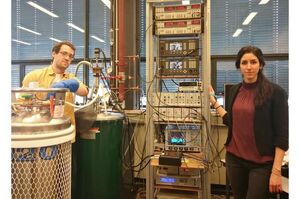
Towards 2D memory technology by magnetic graphene
"In spintronics, the magnetic moment of electrons (spin) is used to transfer and manipulate information. An ultra-compact 2D spin-logic circuitry could be built from 2D materials that can transport the spin information over long distances and also provide strong spin-polarization of charge current. Experiments by physicists at the University of Groningen (The Netherlands) and Colombia University (USA) suggest that magnetic graphene can be the ultimate choice for these 2D spin-logic devices as it efficiently converts charge to spin current and can transfer this strong spin-polarization over long distances. This discovery was published on 6 May in Nature Nanotechnology. Spintronic devices are promising high-speed and energy-saving alternatives for the current electronics. These devices use magnetic moment of electrons so-called spins (‘up’ or ‘down’) to transfer and store information." [...]

FASER is born: new experiment will study particles that interact with dark matter
"The newest experiment at CERN, the European Organization for Nuclear Research, is now in place at the Large Hadron Collider in Geneva. FASER, or Forward Search Experiment, was approved by CERN’s research board in March 2019. Now installed in the LHC tunnel, this experiment, which seeks to understand particles that scientists believe may interact with dark matter, is undergoing tests before data collection commences next year. “This is a great milestone for the experiment,” said Shih-Chieh Hsu, a FASER scientist and University of Washington associate professor of physics. “FASER will be ready to collect data from collisions at the Large Hadron Collider when they resume in spring 2022.” FASER is designed to study the interactions of high-energy neutrinos and to search for new, as-yet-undiscovered light and weakly interacting particles, which some scientists believe interact with dark matter. Unlike visible matter, which makes up us and our world, most matter in the universe — about 85% — consists of dark matter." [...]

Researchers Produce Laser Pulses with Record-Breaking Intensity
"High-intensity pulses allow astrophysical phenomena to be studied in the lab Researchers have demonstrated a record-high laser pulse intensity of over 1023 W/cm2 using the petawatt laser at the Center for Relativistic Laser Science (CoReLS), Institute for Basic Science in the Republic of Korea. It took more than a decade to reach this laser intensity, which is ten times that reported by a team at the University of Michigan in 2004. These ultrahigh intensity light pulses will enable exploration of complex interactions between light and matter in ways not possible before. The powerful laser can be used to examine phenomena believed to be responsible for high-power cosmic rays, which have energies of more than a quadrillion (1015) electronvolts (eV). Although scientists know that these rays originate from somewhere outside our solar system, how they are made and what is forming them has been a longstanding mystery. “This high intensity laser will allow us to examine astrophysical phenomena such as electron-photon and photon-photon scattering in the lab,” said Chang Hee Nam, director of CoReLS and professor at Gwangju Institute of Science & Technology." [...]
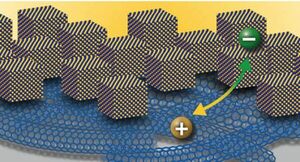
Scientists at NREL Report New Synapse-Like Phototransistor
"Researchers at the U.S. Department of Energy’s National Renewable Energy Laboratory (NREL) developed a breakthrough in energy-efficient phototransistors. Such devices could eventually help computers process visual information more like the human brain and be used as sensors in things like self-driving vehicles. The structures rely on a new type of semiconductor—metal-halide perovskites—which have proven to be highly efficient at converting sunlight into electrical energy and shown tremendous promise in a range of other technologies. “In general, these perovskite semiconductors are a really unique functional system with potential benefits for a number of different technologies,” said Jeffrey Blackburn, a senior scientist at NREL and co-author of a new paper outlining the research. “NREL became interested in this material system for photovoltaics, but they have many properties that could be applied to whole different areas of science.” In this case, the researchers combined perovskite nanocrystals with a network of single-walled carbon nanotubes to create a material combination they thought might have interesting properties for photovoltaics or detectors. When they shined a laser at it, they found a surprising electrical response." [...]
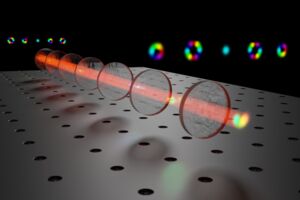
Complex shapes of photons to boost future quantum technologies
"Researchers at Tampere University Photonics Laboratory have demonstrated how two interfering photons can bunch into various shapes. These complex shapes are beneficial for quantum technologies, such as performing fast photonic quantum computations and safe data transfer. The method opens new possibilities also for creating enhanced measurement and sensing techniques. As the digital revolution has now become mainstream, quantum computing and quantum communication are rising in the consciousness of the field. The enhanced measurement technologies enabled by quantum phenomena, and the possibility of scientific progress using new methods, are of particular interest to researchers around the world. Recently two researchers at Tampere University, Assistant Professor Robert Fickler and Doctoral Researcher Markus Hiekkamäki, demonstrated that two-photon interference can be controlled in a near-perfect way using the spatial shape of the photon." [...]
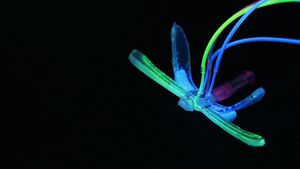
Soft Robotic Dragonfly Signals Environmental Disruptions
"Electronics-free DraBot uses air pressure, microarchitectures and self-healing hydrogels to watch for changes in pH, temperature and oil Engineers at Duke University have developed an electronics-free, entirely soft robot shaped like a dragonfly that can skim across water and react to environmental conditions such as pH, temperature or the presence of oil. The proof-of-principle demonstration could be the precursor to more advanced, autonomous, long-range environmental sentinels for monitoring a wide range of potential telltale signs of problems. The soft robot is described online March 25 in the journal Advanced Intelligent Systems. Soft robots are a growing trend in the industry due to their versatility. Soft parts can handle delicate objects such as biological tissues that metal or ceramic components would damage. Soft bodies can help robots float or squeeze into tight spaces where rigid frames would get stuck." [...]
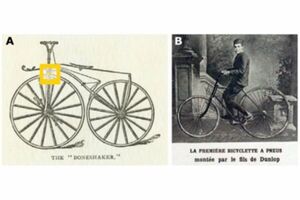
How to Level Up Soft Robotics
"Mechanical engineer offers perspective on the maturation of the field of soft robotics The field of soft robotics has exploded in the past decade, as ever more researchers seek to make real the potential of these pliant, flexible automata in a variety of realms, including search and rescue, exploration and medicine. For all the excitement surrounding these new machines, however, UC Santa Barbara mechanical engineering professor Elliot Hawkes(link is external) wants to ensure that soft robotics research is more than just a flash in the pan. “Some new, rapidly growing fields never take root, while others become thriving disciplines,” Hawkes said. To help guarantee the longevity of soft robotics research, Hawkes, whose own robots have garnered interest for their bioinspired and novel locomotion and for the new possibilities they present, offers an approach that moves the field forward. His viewpoint(link is external), written with colleagues Carmel Majidi from Carnegie Mellon University and Michael T. Tolley of UC San Diego, is published in the journal Science Robotics. “We were looking at publication data for soft robotics and noticed a phase of explosive growth over the last decade,” Hawkes said." [...]

UVA Engineering Computer Scientists Discover Vulnerability Affecting Computers Globally
"In 2018, industry and academic researchers revealed a potentially devastating hardware flaw that made computers and other devices worldwide vulnerable to attack. Researchers named the vulnerability SPECTRE because the flaw was built into modern computer processors that get their speed from a technique called “speculative execution,” in which the processor predicts instructions it might end up executing and preps by following the predicted path to pull the instructions from memory. A Spectre attack tricks the processor into executing instructions along the wrong path. Even though the processor recovers and correctly completes its task, hackers can access confidential data while the processor is heading the wrong way. Since Spectre was discovered, the world’s most talented computer scientists from industry and academia have worked on software patches and hardware defenses, confident they’ve been able to protect the most vulnerable points in the speculative execution process without slowing down computing speeds too much. They will have to go back to the drawing board." [...]
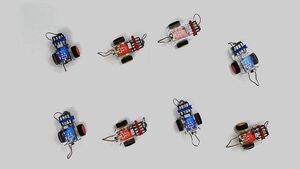
Physicists reveal how motion can be generated by frustration
"University of Chicago scientists lay out a theory for the emerging field of non-reciprocal matter When two people want different things, frustration is inevitable. But these non-reciprocal interactions can also occur not just between people, but in the natural world. In a paper published April 14 in the journal Nature, a team of University of Chicago scientists described how systems composed of many objects that have such non-reciprocal interactions can evolve in surprising ways. This may underlie many phenomena we see around us, from neurons to bird flocks and quantum systems. There’s a field of physics which deals with figuring out the collective behavior that results from many objects interacting. If the objects have the ability to move according to their own “preferences”, they’re referred to as active agents." [...]
Silicon Chip Will Drive Next Generation Communications
"A new design of ultra-small silicon chip called a multiplexer will effectively manage terahertz waves which are key to the next generation of communications: 6G and beyond. Researchers from Osaka University, Japan and the University of Adelaide, Australia have worked together to produce the new multiplexer made from pure silicon for terahertz-range communications in the 300-GHz band. “In order to control the great spectral bandwidth of terahertz waves, a multiplexer, which is used to split and join signals, is critical for dividing the information into manageable chunks that can be more easily processed and so can be transmitted faster from one device to another,” said Associate Professor Withawat Withayachumnankul from the University of Adelaide’s School of Electrical and Electronic Engineering. “Up until now compact and practical multiplexers have not been developed for the terahertz range. The new terahertz multiplexers, which are economical to manufacture, will be extremely useful for ultra-broadband wireless communications." Associate Professor Withawat Withayachumnankul “The shape of the chips we have developed is the key to combining and splitting channels so that more data can be processed more rapidly." [...]

The Radio We Could Send to Hell
"There were few bright spots in the pandemic summer of 2020. One of the most dazzling was the flight of U.S. astronauts to the International Space Station and their safe return to Earth aboard a commercial spacecraft from SpaceX. This demonstration was significant for many reasons, one of which was that it suggested a future in which NASA, freed from the demands of getting people to low Earth orbit, could aim much farther. Perhaps as far as Venus. Excitement over a possible mission to Venus was stoked by the (now somewhat disputed) discovery of phosphine gas—a possible sign of microbial life—in that planet’s atmosphere. But the second planet from the sun has such an extreme environment that the longest-lasting lander, the Soviet Venera 13, was able to send data for only 2 hours and 7 minutes." [...]

A silver lining for extreme electronics
"Michigan State researchers are building tougher circuits to help withstand the grueling demands of energy production, space exploration and more Tomorrow’s cutting-edge technology will need electronics that can tolerate extreme conditions. That’s why a group of researchers led by Michigan State University’s Jason Nicholas is building stronger circuits today. Nicholas and his team have developed more heat resilient silver circuitry with an assist from nickel. The team described the work, which was funded by the U.S. Department of Energy Solid Oxide Fuel Cell Program, on April 15 in the journal Scripta Materialia. The types of devices that the MSU team is working to benefit — next-generation fuel cells, high-temperature semiconductors and solid oxide electrolysis cells — could have applications in the auto, energy and aerospace industries. Although you can’t buy these devices off the shelf now, researchers are currently building them in labs to test in the real world, and even on other planets." [...]
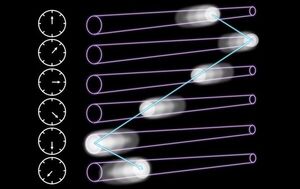
Laser Light Makes a Comeback (Literally): New Phenomenon Discovered
"Researchers from Osaka University discover phenomenon of reciprocating propagation of laser pulse intensity in free space. Straight-line constant-speed propagation in free space is a basic characteristic of light. In a recent study published in Communications Physics, researchers from Osaka University discovered the phenomenon of reciprocating propagation of laser pulse intensity in free space. Spatiotemporal couplings have been recently used to produce light with tunable group-velocity, direction, and trajectory in free space. For example, the flying focus (a moving laser pulse intensity in the extended Rayleigh length), where longitudinal chromatism and temporal chirp are combined to control the spectrum-dependent focus-separation in space and spectrum-dependent pulse-location in time, respectively, has arbitrarily tunable propagating group-velocity and direction in space and time. However, in the previous result, the flying focus can only propagate along a certain direction either forward or backward, although the propagating group-velocity can be freely controlled." [...]
Documentação
A documentação é parte essencial do processo de aprendizagem e a Internet além de artigos interessantes de explorar também tem alguma documentação em formato PDF interessante de ler. Todos os links aqui apresentados são para conteúdo disponibilizado livremente pelo editor do livro.
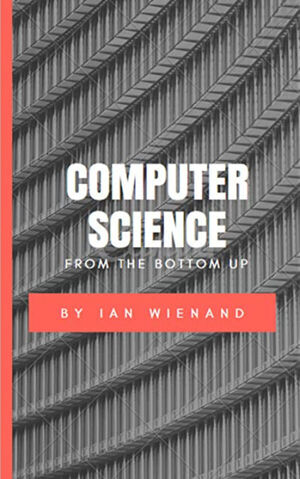
Computer Science from the Bottom Up
"In a nutshell, what you are reading is intended to be a shop class for computer science. Young computer science students are taught to "drive" the computer; but where do you go to learn what is under the hood? Trying to understand the operating system is unfortunately not as easy as just opening the bonnet. The current Linux kernel runs into the millions of lines of code, add to that the other critical parts of a modern operating system (the compiler, assembler and system libraries) and your code base becomes unimaginable. Further still, add a University level operating systems course (or four), some good reference manuals, two or three years of C experience and, just maybe, you might be able to figure out where to start looking to make sense of it all. To keep with the car analogy, the prospective student is starting out trying to work on a Formula One engine without ever knowing how a two stroke motor operates." [...]
Projetos Maker
Diversos Projetos interessantes.

Elk: a tiny JS engine for embedded systems
"Elk is a tiny embeddable JavaScript engine that implements a small but usable subset of ES6. It is designed for microcontroller development. Instead of writing firmware code in C/C++, Elk allows to develop in JavaScript. Another use case is providing customers with a secure, protected scripting environment for product customisation. Elk features include: - Cross platform. Works anywhere from 8-bit microcontrollers to 64-bit servers - Zero dependencies." [...]
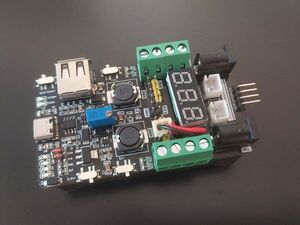
Portable Power Supply for microcontroller projects
"In this project I tried to overcome a very common issue while working on a portable electronics project. That is how to power my circuits If you are working on a portable electronics project, or in a remote place where you can’t bring your bulky bench power supply with you, then powering your circuit becomes quite challenging sometimes. To power our projects we often use Lithium ion or Li-Po batteries. These batteries are convenient to use because they are small, rechargeable and often come in various shapes & sizes. But the issue with these batteries is that most of these batteries are rated for 3.7 volts and a maximum of 4.2v. Now for our application we generally need either 3.3v or 5v because typical microcontrollers and sensors work on these voltage levels." [...]

Arduino Tinfoil Piano
"In this Instructables I will explain how to make this Arduino Tinfoil Piano. Supplies: - Arduino - Breadboard - 10MΩ Resistor x8 - Piezo Buzzer - Jumpers - Double Sided Tape - Tinfoil - Cardboard" [...]

ATtiny85 BOOST CONVERTER
"ATtiny85 Boost Converter Today in this episode of Arduino projects I am going to introduce you with a new electronic circuit. This electronic circuit that I am going to introduce is known as 'Boost Converter' or 'Step-up Converter' or 'DC to DC Converter' or SMPS(switch mode power supply), it does not matter however you want to call it The job of this circuit is to Step up the low DC Voltage to a high DC voltage efficiently But there is a thing that you need to keep in your mind is that this circuit can only step up DC voltage not AC but in Case of AC voltage you can use a Step up transformer to step up the AC voltage but This is an another subject to discuss on The boost converter that I am going to design in this project or episode, operates on 4V - 5V DC and output voltage can be adjusted from 5V to 30V. You can adjust the output voltage according to your necessity But the second thing that you need to keep in your mind is that you can't connect a DC Load than draws more current. HARDWARE LIST:- 1. ATTINY85 (8-BIT Microcontroller) 2. IRF Z44 MOSFET(N-Channel) 3." [...]
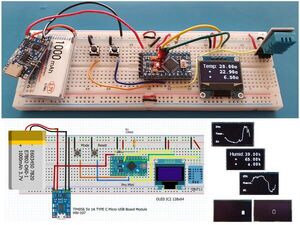
Temp and Humidity Monitor with Graphs and Battery Monitor
"Monitor to record temperature and humidity, store 24 hours history and display these in a graph. Battery level monitor screensave. The project is an evolution of my project "Very low power temp and humidity monitor with min and max". I wanted to extend this to store 24 hours of history and display this in a graph. As explained below, I had to remove the code that put the processor to sleep so I also added a battery level indicator so I know when it needs recharging. I encountered a couple of issues with extending the project: - Initially I added an array to store the temperature history int tempHistory[96]; this worked well, however as soon as I added a second array to sore the humidity history int humidHistory[96] the program would no longer run." [...]

Conundrometer
"A pocket anagram game designed to help improve your word skills. On the Technoblogy website, David Johnson-Davies designed an anagram game called Conundrometer to help his son improve his anagram solving skills. This seemed like a great project to upgrade with a PCB and a 3D printed case. I also changed the circuit to use a more modern microprocessor. The circuit is designed around a ATtiny3216 microprocessor. This 20pin device has 32K Flash memory and 2K Static memory which happens to be the same sizes as the ATmega328 used by the Arduino UNO." [...]
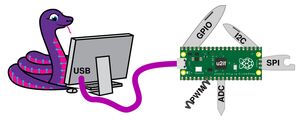
CircuitPython Libraries on any Computer with Raspberry Pi Pico
"This guide will show you how to use a Raspberry Pi Pico RP2040 to connect various sensors and breakouts to your PC running Windows, Mac OSX, or Linux. Special firmware gets loaded onto the Pico and turns it into a sort of Swiss army knife providing: - General Purpose digital Input and Output (GPIO) for things like buttons and LEDs - Analog to Digital Conversion (ADC) for reading analog signals - Pulse Width Modulation (PWM) for servos or LED dimming - I2C and SPI for connecting *lots* of external sensors, displays, etc. - NeoPixels (WS2812B) for happy rainbow blinky fun! This is very similar to what the FT232H and MCP2221 already provide. The Magical u2if Firmware The key element to enabling this capability on the Raspberry Pi Pico is thanks to the excellent u2if firmware written by execuc. The main repo not only contains the firmware that goes on the Pico itself, but micropython compliant Python code for interfacing to the Pico from your PC." [...]
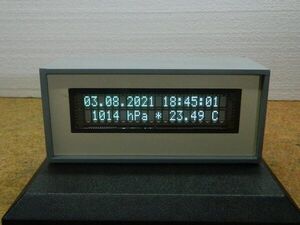
Easiest Way to Connect Any VFD Serial Display to Arduino
"This is a nice retro-look weather station and clock that I made with a POS VFD display for which I did not have any data and information. The device is very simple to build and contains only a few components: - Arduino Nano microcontroller - BMP180 barometric sensor, which is mounted outside the box for more accurate temperature measurement - DS3231 realtime clock module - and POS customer VFD display First we need to connect it to the power supply. For this purpose I reviewed the datasheets for most chips on the board and it is seen that the supply voltage should be 5V. It was easiest and safest to solder the power cords directly to pin 4 (Gnd) and pin 6 (Vcc) of MC 34063 chip. After connecting the power supply, the basic information appears on the display, and we are most interested in Baud Rate, who in this case is 4800. " [...]

Control your TV using The Force!
"In this project I’ll show you how to build a gesture-controlled remote so you can turn on and control your TV using “The Force!” I partnered with Verizon for this video to show you from start to finish how to: - Wire up an IR receiver to a Feather M4 Express - Load some CircuitPython code that will print out what the IR receiver captures - Grab all the IR codes you need from your TV’s remote - Wire up an IR LED and APDS9960 gesture sensor - Drop your IR codes into another CircuitPython script - Assemble everything into a slick 3d-printed shell - Kick back and turn on The Mandalorian like a Jedi Here are all the parts you need to make it: Feather M4 Express APDS9960 Proximity, Light, RGB and Gesture sensor Male/Female Jumper Wires IR LEDs IR Receiver Silicone-coated wire SPDT Slide Switch 220 Ohm Resistor for the LED (I used 270 Ohm in the video but 220 will work fine!) PN2222 Transistor 470 Ohm Resistor for the Transistor if you go that route" [...]
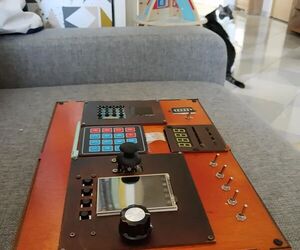
Kid's Control Panel With Arduino(s)
"Since getting an Arduino starter kit I was wondering what to make of all those fancy buttons, shiny LEDs, touchscreen LCD displays... I was thinking about weather station, but I was told that in the maker's world, weather station is like a "Hello World" app. Like playing "Stairway to Heaven" in a guitar store. Then, when chasing away my kid from oven's controls for 20th time, it struck me - I could make her a spaceship-like control panel (and I still made a weather station anyway, in a separate project...). There are plenty of examples of such projects in the Internet, but still, here's my medium quality stab at it. I didn't want to stick to just backlit pushbuttons and lever switches." [...]

TinyICOC - AVR In-Circuit Oscillator Calibrator
"Sometimes AVRs are operated without an external clock. The internal oscillator does a good job in most applications, but when it comes to precise timing, it is too inaccurate. The accuracy of the oscillator of an AVR is only +/-10%. Fortunately, the oscillator can be calibrated, increasing its accuracy to +/-2% or better. There are a few ways to perform this manual calibration, but several steps are required. The TinyICOC does this fully automatically." [...]
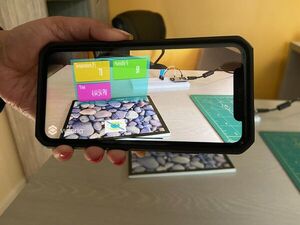
Augmented Reality (AR) with Internet of Things (IoT)
"This is fun project to demonstrate an integration of IoT sensor data on augmented reality dashboard using Unity and Vuforia. This is a demonstration of Augment Reality with Internet of Things. My home office temperature and humidity is displayed on virtual dashboard which is augmented on top of a real cardboard. There is a virtual button which is augmented on the floor of the cardboard. On tap of the button, dashboard disappears. This technology has lot of potential and I am curious what you build." [...]
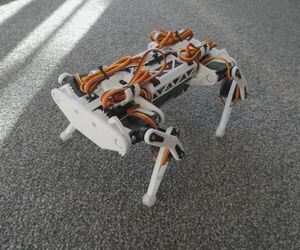
ESP32 Small Robot Dog
"ESP32 small robot dog is my attempt to make quadruped dog that become very popular after Boston Dynamics Spot. Work on the project still in progress and hardware and software can changed. Features - Only ESP32 required (you don't need additional PWM i2c, Bluetooth modules, etc) - Arduino IDE - Web based interface with telemetry, to control robot you will need just you smartphone or tablet - CLI interface for calibration and debug - True Inverse kinematics code - Configurable Gait sequence and settings (just if you need it) - Fun Electronics - 1 x ESP32 with 38pin - 1 x 50x70 mm green prototyping board - 12 x TowerPro MG90D servos (it can be tricky to use other servos, as size may vary) - 1 x INA219 (optional) - 1 x MPU9250 (optional, still has not been implemented, WIP) - 3 x Mini360 (DC-DC Buck Converter Step Down Module) or similar, 2 for front/hind legs (or more), 1 for ESP32 - 1 x 18650 Battery Holder for 2 elements (try to find "18650 battery holder smt") - some capacitors Other parts - 8 x 8x12x2.5mm bearings - 4 x small cable ties - Super glue (cyanoacrylate) to glue all parts together" [...]

Putting an old digital clock (with an outdoor thermometer) on steroids
"According to the label on the back, it is a rebranded “Electronics Tomorrow LTD.” model no. 7904. It supports DCF77 time synchronization and has been working reliably for the past 20 years. But recently I wasn’t so thrilled with the outdoor temperature sensor. It’s clunky, runs on 2 AAA batteries, and has the additional problem of being just on one side of the apartment. So you get skewed readings throughout the day, as the sun moves in the sky." [...]

Security-Camera with Esp32 Cam, PIR and Telegram Bot
"The camera sends you a photo as soon as motion has been detected or takes photos when you request it with telegram command. I devised this project to create a smart security system, without the need for external input devices, such as a numeric keypad for alarm activation, etc. In fact, the project allows you to manage the esp32 directly from your mobile phone or PC via a telegram bot. This simple home surveillance system allows you to receive a photo on telegram when movement is detected via the PIR sensor, to request an instant photo from the esp32, turn on or off the integrated led on the esp or to arm and disarm the PIR sensor.. All through simple commands of the telegram bot. For the creation of the telegram bot there are many online guides that explain how to create it starting from the botFather. " [...]
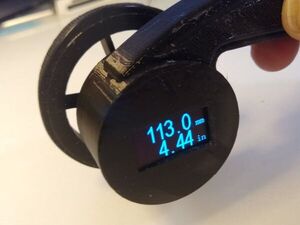
Measuring Wheel
"A 3D printed measuring wheel displaying both metric and imperial measurements. While reading some of the comments on DIY Simple Measuring Wheel with Rotary Encoder by Mirko Pavleski, one in particular stood out. The comment by soorajts suggesting "squeezing it into an attiny and oled display" got me wondering whether I could not only do this but fit all the components inside the hub of the wheel itself. One idea was to do something like my Twist-to-Set Kitchen Timer. The problem then comes how to connect the handle. Also the gearing would limit how small the hub could be." [...]

AVR TPI Programming With usbasp For Dummies
"There is an odd famine of information about this particular subject available in text form. If you google “usbasp tpi” and things like it, you’ll find posts on the avr forums filled with incorrect information and schematics. This post is an attempt to remedy this. I intend to show exactly the following, no more and no less: What is TPI? How to reprogram your usbasp to be capable of TPI. How to wire up a TPI-only microcontroller (such as the ATTiny20) to the usbasp’s ISP interface." [...]

Battery powered Tv remote control with 3D-printed case
"Make your own TV remote! My girlfriend's TV remote control stopped working. She could have bought a cheap replacement at a store nearby, but then she thought: we are both engineers, let's make our own one together! As we are quite complementary in our skills, this was a different, but fun way to spend some time during lockdown and it gave us the opportunity to learn a bit about how this everyday technology works. Oh, and having a small 3D-printer at home also played a role. How it works First of all, as we wanted to make a simple design reliying on the Arduino UNO, we evaluated the minimum number of commands that we needed to operate our TV." [...]
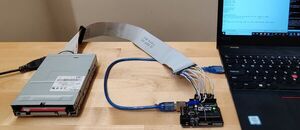
ArduinoFDC
"ArduinoFDC is a sketch that implements a floppy disk controller. It works on an Arduino UNO, Nano, Pro Mini or MEGA. ArduinoFDC consists of three parts: A library providing low-level functions to allow reading and writing disks at the sector level as well as low-level formatting disks. Integration of ChaN's brilliant FatFS library to provide file-level functions for reading and writing files and directories in a FAT (MS-DOS) file system and a high-level format function to initialize a FAT file system. An example sketch implementing ArduDOS, a (very) small DOS environment for browsing a FAT file system as well as a low-level disk monitor to access sector data on the disk, including the ability to transfer whole disks or single files via the XModem protocol. ArduinoFDC works with double density (DD) as well as high density (HD) disk drives." [...]
Bike Tracker
"Arduino based bicycle movement sensor and GPS tracker. Background There are actually plenty of bicycle trackers around, so why make your own? Well, so that it works the way you want it… And it’s fun! I was looking for a tracker that would let me know if the bike is moving and that will start tracking it through GPS if it’s stolen. I did not want it to work through bluetooth, because that requires proximity to the device and that enough users of the same tracker are around (never liked that concept). And I did not want to tie myself into using an app that likely will stop working if the company goes belly up." [...]
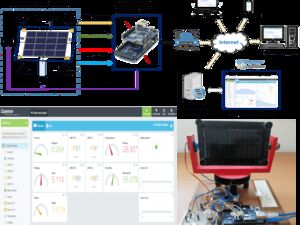
Internet of things (IoT)-based solar tracker
"The proposed IoT solution can be employed in various fields to connect devices or things to the internet. This project presents a simple and low-cost IoT solution to monitor and control a smart dual-axis solar tracker system for performance evaluation. The proposed IoT-based solar tracker system is depicted in Fig. 1. It is a dual-axis solar tracker that can rotate automatically to track the sun's position using LDR sensors, or manually by the user through the dashboard of an IoT application. The system starts with detects the sun position (intensity of light) by LDR sensors and sends the data to the controller (Arduino Mega board)." [...]

Perceptmobile: Azure Percept Obstacle Avoidance LEGO Car
"Obstacle avoidance with LEGO Boost car, powered by Azure Percept. Azure Percept is a platform of hardware and services that simplifies use of Azure AI technologies on the edge. I decided to give a try at building simple obstacle avoidance car over the weekend, I was happy with the result, so here is a story about it. The car base is built with LEGO Boost and it is slightly modified M.T.R. 4 model, and instructions for the model come in the standard LEGO Boost package. On top of this base I placed Azure Percept with camera Azure Percept Vision." [...]
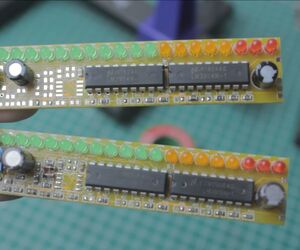
Vu Meter LM3914 Vs LM3915
"A few months ago I made a Vu Meter using IC LM3915. The results from the Vu meter are quite good for me. And in this article I made another vu meter with a different IC. The IC that I use this time is the LM3914. This IC is still in the same family as the LM3915 IC. because it has a different series, of course I have different characteristics too." [...]
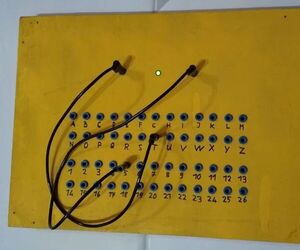
Electronic Quiz Game
"This is kind of an old project. I'm not the first to describe something like this and even way back then, when I was 12 or 13 years old an built this, I had my very clear inspiration. My grandma had such a game left from my uncle and I'm sure we could have taken it with us, if we had asked nicely. But building one myself (I was the hardware-guy) seemed way cooler. And it was. I was quite unsure, if I should even describe such an old project." [...]

Mobile Station for Weather Exploration With AtTiny85 & BME280 for Your Smartphone
"There are couple weather stations which are build with a BME280 and Arduinos, ESP32/ESP8266, Raspberry Pi's. But not everyone wants to use these big boys for some "small" tasks like getting weather data. Also, these kind of microcontrollers are not that handy to take with you. While walking with my dog at night, the temperature changes between inhabited areas and on the fields. Just to measure the temperature and the humidity, I wanted to create a small handy device to carry around with me while going for walks. So the main issue for a station like this was the power supply." [...]
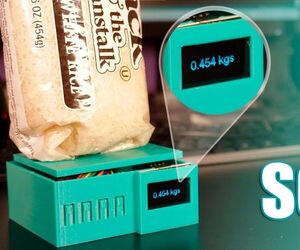
DIY Arduino Smart Digital Scale | ESP8266 + HX711
"Hello to everyone, today I am here to show you a very insteresting project that I was working on for a while, it consists on a digital scale using the ESP-12S microcontroller plus a load cell and it HX711 wheatstone bridge to i2c converter, it is capable to measure weight precisely in the spectrum of grams, the sensor I am using is limited to 5Kg but you can use one for smaller or bigger weights. As you can noticed, I am using the ESP8266 so it has WiFi capabilities that let me in the future send the measure data to the cloud. The code can be modified to allow the scale to count objects, calculate liquid volume or what you imagine to do with force measuring. This project may seem difficult or very complex, but it is definitely not completely, since you will have all the guidance for the construction, it was difficult for me to design it to make life a little easier for you. Any conceptual doubt, you are free to ask it without problems. You should have an understanding of: 3D Printing (Optional for the case)." [...]
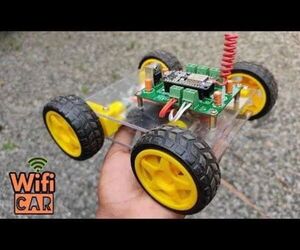
How to Make a WIFI (Nodemcu) Car
"Today we are going to make an esp8266 smart car. This WiFi remote control car runs with ESP8266 module (NodeMCU).This NodeMCU comes with MicroUSB port and also can be operated with 7-12Volt. You can also program it with Arduino IDE (software). So that's it, let's get started! COMPONENTS REQUIRED - PCB - ESP8266-12E Module ( NodeMCU) - L293D Motor Driver IC - 2 Nos - DC Gear Motor - 4 Nos - 7805 regulator IC - Battery 7-12V - 100uF/25V Capacitor - 4 Nos - 100nF Ceramic Capacitor - 2 Nos - Female Header Pins - 2 Pin Screw Connectors - 5 Nos - Wheel - 4 Nos - Switch " [...]
Secção Videos
Videos interessantes.
That's all Folks!



